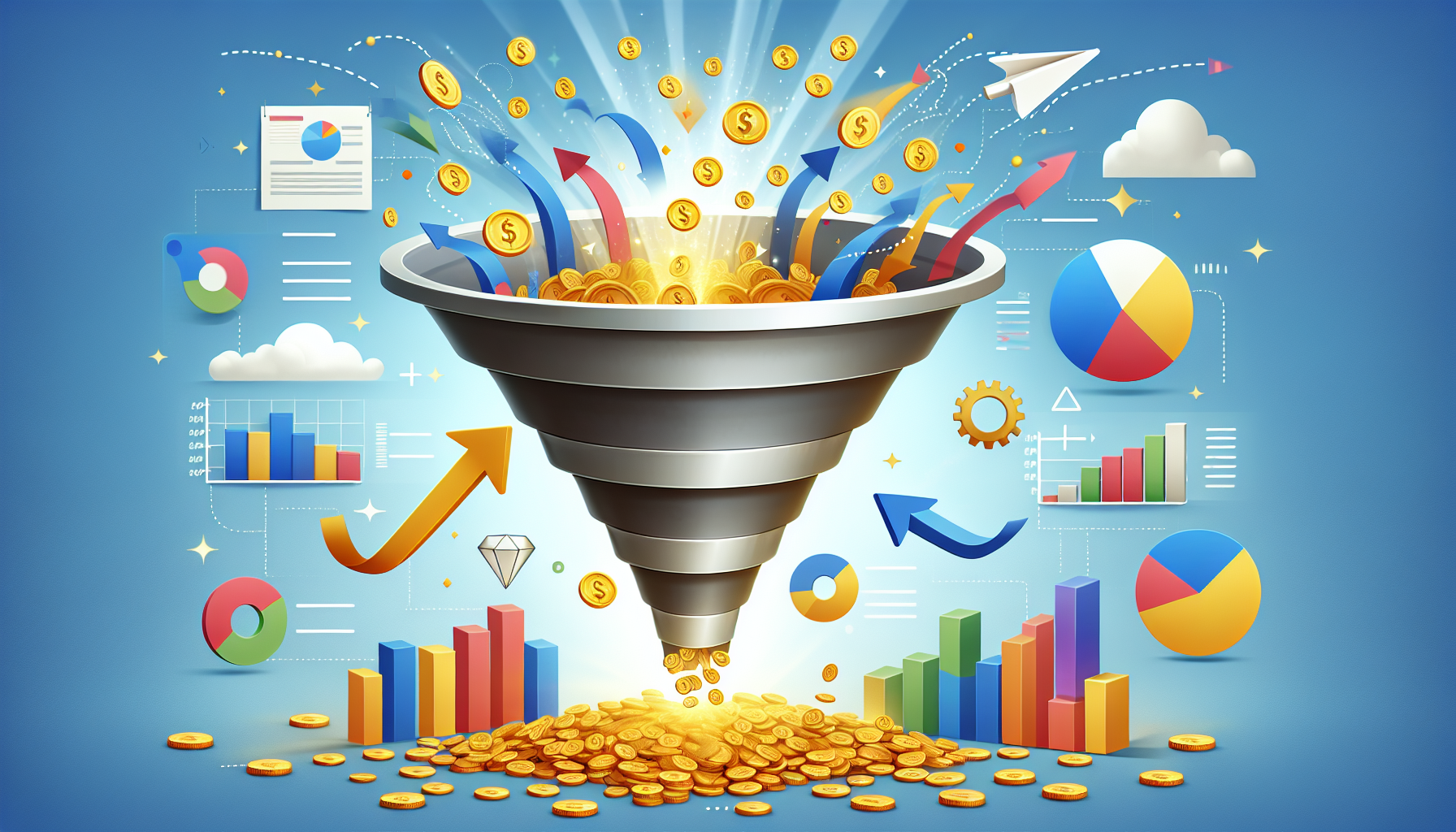Are you struggling to gauge the success of your content marketing efforts? ‘Content marketing metrics’ are the compass that guides you through the digital marketing landscape, providing insights that shape your strategy.
In this article, we dive into the key metrics you should monitor, from traffic analysis and engagement rates to SEO rankings and conversion statistics. Understanding these metrics puts you in control of your content’s performance and the success of your marketing goals.
Key Takeaways
- Content marketing metrics and KPIs are crucial for measuring the effectiveness of content strategies, guiding ongoing optimization, and ensuring alignment with business objectives.
- Web analytics tools provide insights into traffic origin and engagement metrics, informing decisions to boost reach, popularity, and quality of content, which are indicators of potential conversion success.
- ROI assessment is the key to understanding content marketing performance, which involves comparing costs against revenue, tracking long-term customer value, and utilizing dashboards and analytics for data-driven strategy enhancement.
Decoding Content Marketing Metrics
Content marketing metrics serve as navigational aids in your content marketing journey. They offer valuable insights into:
- Organic search traffic
- Views
- Traffic sources
- Click-through rate (CTR)
These metrics enable you to continually refine and optimize your content strategies in alignment with your digital marketing objectives and priorities.
Understanding Key Performance Indicators (KPIs)
Consider Key Performance Indicators (KPIs) as your guiding light in content marketing. They are measurable goals that enable teams to assess the effectiveness of their content marketing initiatives. KPIs are specifically designed to monitor metrics including:
- Brand awareness
- Customer engagement
- Newsletter open rates
- Website visits
It’s vital to choose KPIs that are quantitative and relevant, offering an effective measure of your success.
Measuring Against Objectives
Goals without a plan are just wishes. So, when you set business goals, it’s essential to align them with your content marketing metrics.
This alignment ensures a focused approach to measuring success. Also, content marketing metrics, including consumption metrics and retention metrics, are intricately linked to customer retention objectives. They help you attract and engage customers, leading to heightened customer loyalty and decreased churn rates.
The Pillars of Traffic Analysis

Understanding your audience’s origins and interactions with your content provides a comprehensive view of your marketing landscape.
And the tools to decipher this map? Web analytics tools like Google Analytics and Hotjar, where you can monitor traffic, analyze user volume and sessions, and discover the primary sources of your website’s traffic.
Visitor Volume: A Look at Users and Sessions
The number of unique users and sessions on your site is a clear indicator of the reach and popularity of your content. To measure this in Google Analytics, you would access Acquisition > Traffic acquisition and identify ‘referrals’ to examine comprehensive session data.
While the average visitor volume can vary significantly depending on factors such as publishing frequency and industry, a higher volume usually signals engaging and valuable content.
Traffic Origins: Uncovering Top Sources
Finding the primary traffic sources for your website is akin to discovering hidden treasures on your marketing map. These sources, which include direct, referral, and search traffic, offer crucial insights into your audience’s behavior.
Google Analytics allows you to examine these different traffic sources, which, in turn, aids in the optimization of your marketing strategies toward the most effective channels.
Engagement Metrics Unveiled

Engagement metrics serve as the compass needle for your content marketing, pointing out if your content is on the right track. They play a critical role in assessing user interaction with content, thus aiding in enhancing the effectiveness and relevance of the content.
Accurately tracking these metrics can provide you with valuable insights into how your content is performing and what can be done to improve it.
Delving into Average Time Spent on Page
The time users spend on your page is a clear indicator of their interest level and the quality of your content. The more time they spend, the more likely they are to convert.
And while the average duration spent on a page across all industries is 54 seconds, compelling and engaging content can keep users on your page for much longer, improving your chances of conversion.
Interpreting Pages Per Visit
The number of pages your audience views per visit is a strong indicator of their engagement level and your website’s navigation.
If your audience is visiting multiple pages per session, it means they’re interested in your content and are exploring your site further. However, if they’re viewing only one page, it could indicate a need to improve your website’s user experience.
Understanding this metric can help you fine-tune your content strategy and enhance your website’s overall performance.
SEO Metrics That Matter

In content marketing, SEO metrics serve as guiding stars, directing the course of your journey. They help you boost your visibility, attract organic traffic, and improve your rankings on search engines.
By tracking metrics such as keyword rankings and backlinks, you can optimize your content and make your website more discoverable through search engine optimization.
Tracking Keyword Rankings
Keyword ranking serves as a beacon of light in the realm of SEO. It indicates how well your website is performing in search engine results for specific keywords.
By monitoring your keyword performance using tools like Ahrefs and SEMrush, you can optimize your content for better search engine rankings.
Adjustments in keyword rankings can significantly impact your website traffic, making it a critical metric to track. Utilizing tools like Google Search Console can help you monitor these changes effectively.
The Power of Backlinks
Backlinks are like endorsements from other websites that boost your website’s credibility and authority. High-quality backlinks can positively impact your search engine rankings and visibility.
By using tools like SEMrush and Ahrefs, you can assess the quality of your backlinks and take action to improve your website’s authority.
Conversion Metrics: Beyond Views and Clicks

Content marketing is not solely about accumulating views and clicks, but also about the subsequent actions. Conversion metrics help you understand the impact of your content on lead generation and sales, going beyond mere views and clicks.
By tracking metrics like conversion rate and goal completions, you can measure the effectiveness of your content and optimize it for better results.
Conversion Rate: The Ultimate Measure of Success
Conversion rate is the ultimate measure of content effectiveness. It quantifies the proportion of users who engage with a call to action and fulfill a specific action, such as purchasing a product or subscribing to a newsletter.
A higher conversion rate signifies that the content is compelling and influential, resulting in greater successful conversions.
Understanding Goal Completions and Values
Goal completions and values in content marketing are like the X marks the spot on a treasure map. They help you track specific actions that your audience takes, like:
- making a purchase
- signing up for a newsletter
- downloading a whitepaper
- filling out a contact form
Understanding these metrics helps assess your content marketing ROI and the impact of your content on your business objectives.
Social Media Metrics: Gauging Brand Impact
The world of social media is like a bustling market where your brand can interact directly with your audience through social media posts. Social media metrics help you gauge the impact of your content on brand awareness and audience engagement on these platforms.
By analyzing metrics like social shares and comments, you can measure content reach and audience interaction, giving you a better idea of your brand’s impact.

Analyzing Social Shares and Comments
Social shares and comments are like the cheers and applause from your audience. They indicate how your audience interacts with your content and how far it reaches.
A rise in social shares and comments indicates that your content is resonating with your audience, leading to increased exposure and brand recognition.
Assessing Follower Growth and Engagement
Your followers are your loyal audience who are interested in your brand and content. Tracking social media follower growth and engagement levels is crucial for understanding your audience and optimizing your content strategy.
By calculating the engagement rate and using UTM tracking to monitor the performance of URLs shared on social media, you can effectively measure the growth of your followers and their engagement with your content.
The ROI of Content Marketing
Ultimately, the effectiveness of your content marketing efforts is gauged by the content marketing performance, which is measured through the return on investment (ROI). Calculating the ROI is like checking the compass to see if your ship is on the right course toward content marketing success and your business goals.
By comparing content marketing costs with revenue generated, you can determine the effectiveness of your strategy and justify your spending.
Calculating Cost Versus Revenue Generated
Comparing content marketing costs with the revenue generated is like weighing the gold you’ve found on your treasure hunt.
It helps you determine the overall effectiveness of your content marketing strategy. By tracking the direct revenue from your campaigns and connecting content marketing campaigns with their revenue impact, you can calculate the ROI of your content marketing efforts.
Long-Term Value: Assessing Customer Retention and Lifetime Value
Customer retention is like finding a reliable crew for your ship. It’s more cost-effective than constantly acquiring new crew members (or customers), and it can increase spending over time.
By assessing customer retention and lifetime value, you can measure the long-term impact of your content marketing efforts and adjust your strategy for better results.
Building and Utilizing a Content Marketing Dashboard
A content marketing dashboard acts as a centralized record, akin to a captain’s log, where all crucial data is documented. It visually presents essential metrics and KPIs associated with content marketing, including:
- Website traffic
- Engagement
- Conversions
- ROI
By regularly analyzing your dashboard, you can assess the performance of your content strategies, identify areas requiring enhancement, and employ data-driven insights to enhance your content marketing campaigns.
Selecting Metrics for Your Dashboard
Choosing appropriate metrics for your dashboard parallels picking the right tools for a treasure hunt. It’s important to choose metrics that align with the objectives of your content marketing strategy and can effectively measure its success.
By focusing on a select few key metrics, you can track the effectiveness of your content marketing strategies more accurately.
Implementing Data Analytics Tools
Data analytics tools combine the functionalities of a compass, map, and spyglass, guiding your decision-making process. They help you collect, analyze, and visualize your content marketing data, guiding your decision-making process.
By integrating data analytics tools, you can enhance your content marketing strategies, optimize your campaigns, and increase your conversions.
Optimizing Content Through A/B Testing
A/B testing is akin to exploring different routes in a treasure hunt to determine the quickest path to the treasure. By testing different versions of your content, you can identify elements that drive better results and improve your content’s overall performance.
Identifying Variables for Testing
Selecting the right variables for testing can be compared to choosing the best route in a treasure hunt. By selecting specific content elements to test, such as headlines, images, or calls to action, you can optimize your content effectiveness.
This helps enhance user engagement and decrease bounce rates, leading to better content performance.
Interpreting Test Results
Interpreting A/B test results parallels decoding a treasure map. It helps you make data-driven decisions and refine your content marketing strategy.
By paying attention to crucial indicators like conversion rate and click-through rate, you can gain actionable insights into the performance of different content variations.
Summary
And so, we’ve reached the end of our voyage. We’ve navigated the vast seas of content marketing metrics, from decoding KPIs and analyzing traffic to measuring social media impact and calculating ROI.
We’ve seen how vital tools like Google Analytics and content marketing dashboards are in guiding our journey. And we’ve learned that to find the true treasure – content marketing success – we need to continually monitor, analyze, and optimize our content. So, are you ready to set sail on your content marketing journey?
Frequently Asked Questions
What are KPIs in content marketing?
KPIs in content marketing are measurable goals used to evaluate the success of a particular initiative, such as brand awareness, customer engagement, newsletter open rates, and website visits. Focus on these metrics to gauge the effectiveness of your content marketing efforts.
How do you measure content marketing?
You can measure your content marketing performance by tracking revenue, loyalty/retention, leads, number of visitors, page views, and bounce rate. These metrics will help you evaluate the effectiveness of your content marketing efforts.
Which metric is the most important metric with regards to content marketing?
The most important metric with regards to content marketing is website traffic. It is crucial for evaluating the performance of your content and indicates the reach and visibility of your content.
What are the 5 essential elements of a content marketing strategy?
A successful content marketing strategy should have five core elements to be effective.
How can we analyze website traffic to understand visitor behavior?
To analyze website traffic and understand visitor behavior, use analytics tools like Google Analytics and Hotjar to monitor traffic, analyze user volume and sessions, and discover the primary sources of your website’s traffic.

